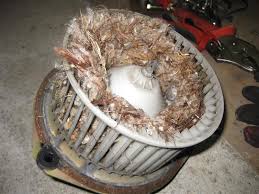Air Freshener In Ac Unit

website utilizes responsive design to provide convenient experience that conforms to your devices screen size. website please follow below instructions. If you’re using Internet Explorer 8 or earlier, you will need to use an alternate browser such as Firefox or Chrome or upgrade to a newer version of internet Explorer (IE9 or greater). If you’re using Internet Explorer 9 and higher, turn off your Internet Explorer browser’s “Compatibility View settings” by following steps below: Right click at the top of your browser and make sure the “Menu Bar” option is selected Select “Tools” from the menu bar and then select “Compatibility View settings” In the pop-up menu uncheck all three boxes and click “Close” Your browser window will automatically refresh and you’ll be ready to go 8,000 BTU 115v Through-the-Wall Air Conditioner 10,000 BTU 115v Through-the-Wall Air Conditioner 10,000 BTU 230v Through-the-Wall Air Conditioner

10,000 BTU 230v Through-the-Wall Air Conditioner with Heat 12,000 BTU 115v Through-the-Wall Air Conditioner 12,000 BTU 230v Through-the-Wall Air Conditioner 12,000 BTU 230v Through-the-Wall Air Conditioner with Heat 9,800/10,000 BTU Cooling Thru-The-Wall Air Conditioner Cooling & Heating 11,200/11,500 BTU Thru-The-Wall Air Conditioner 10,900/11,200 BTU Cooling Thru-The-Wall Air Conditioner Cooling & Heating 8,000 BTU Thru-The-Wall Air Conditioner 9,800 BTU Thru-The-Wall Air Conditioner 10,000 BTU Thru-The-Wall Air Conditioner 11,500 BTU Thru-The-Wall Air ConditionerFirstly in order to understand the role desiccants play in automotive Air Conditioning (AC) systems we need to look at what a car/van or truck AC system is and then understand how water and moisture can effect it. Air conditioning's main principles are Compression, Condensation, Expansion, and Evaporation. The fluid such as HFC-134a that passes around the whole system is the refrigerant.

Hard tubing and flexible hoses connect the components of the air conditioning in your car. In most of todays a/c system designs, the Compressor pressurizes refrigerant vapour which gets hot and then moves to the Condenser heat exchanger. As the car moves, outside air flows over the condenser, removing heat from the refrigerant, changing it to a liquid state which is now cooler. Liquid refrigerant moves on to the Receiver-Drier (R/D) for purification. The R/D is sometimes called the "Liquid Tank" and although shown separate above it is often housed within the condenser assembly. From the R/D the liquid refrigerant moves through the thermostatic Expansion Valve (TxV). The TxV drops the pressure of the liquid refrigerant causing some vapour formation and the refrigerant is now colder.. The low pressure liquid and vapour combination moves into the evaporator, where the rest of the liquid refrigerant "boils off" into its gaseous state as it removes heat from its surroundings – thus cooling the air inside the vehicle by passing it over the evaporator coils.

This is a closed loop so that no air/moisture enters from the outside and no refrigerant escapes the system.
Best Floor Covering For Basement StairsHowever when the system was first manufactured there would have inevitably been some moisture trapped during the assembly process.
Shower Heads TimersFurthermore no system is perfectly sealed and over time some moisture will migrate into the system increasing the moisture content of the system.
Lights For Growing Weed Indoor So it's clear that moisture in the system exists. The amount of water present when the refrigerant is a vapour is called the "vapour phase water content" and similarly the amount of water present in the refrigerant when it is in the liquid phase is called "liquid phase water content".

In certain parts of the system the refrigerant is a mix of luquid and vapour and the water will simply be represented as a "refrigerant/water mixture" The water can either be dissolved within the refrigerant fluid or if the amount of water is beyond the saturation point, the free water will also appear as water droplets. Because the AC system's temperature can vary from be freezing cold to very hot the free moisture will vaporise and condense accordingly and there is even the potential for it to freeze forming ice. The desiccant drier (in the Receiver/Dryer) is a key component to assuring long AC system life and maximum performance. It is clear that moisture in the system exists, and AC system engineers have long known the problems created by moisture in a closed loop AC system. Below we list the damage water within the closed loop Air Con system can do: Because of the wide range of temperatures the AC units will be exposed to and the desire to have very low water content level, Molecular Sieve desiccants are used.

Although in other applications silica gel is a popular choice of desiccant. However silica gel release moisture at the higher temperatures an AC system would experience and it is also less effective at lower moisture content levels, compared to molecular sieves. You can read more about the difference between molecular sieves and silica gel in this article: why molecular sieves are preferred over silica gel. However all molecular sieves are not of the same quality and using poor quality molecular sieve desiccants in your AC units could actually be even more damaging than the effect of moisture in the system. Poor quality desiccants lead to "Black Death" of the AC system as the beads literally break apart and crumble, causing the system to clog! Flow Dry Technologies AD-1® Molecular Sieve meets (and in some cases surpasses) all the industry standards and are proven to be safe for use with AC refrigerants including HFC-134a and 1234yf. Our desiccant experts are available to discuss your specific questions and needs.